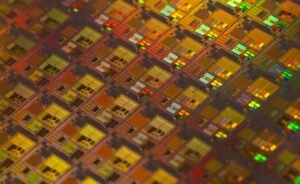AI Application for Computer Vision
Artificial Intelligence (AI) has greatly advanced the field of computer vision, enabling computers to interpret and understand visual information with remarkable accuracy. Through deep learning and neural networks, machines can now analyze images and videos, identify objects and patterns, and even perform complex tasks like object detection, image segmentation, and facial recognition. This article explores the various applications of AI in computer vision and its impact on diverse industries.
Key Takeaways
- AI revolutionizes computer vision by enabling machines to comprehend and interpret visual data.
- Computer vision powered by AI has numerous applications across industries.
- AI-driven computer vision improves efficiency, accuracy, and decision-making processes.
- Advancements in AI algorithms and computing power continually enhance computer vision capabilities.
Applications of AI in Computer Vision
AI-powered computer vision has found applications in various industries, transforming processes and improving outcomes. Industries such as healthcare, manufacturing, retail, automotive, and security have benefited significantly from advancements in this field. Here are some notable applications:
- **Medical Diagnosis**: AI algorithms can analyze medical images, assisting doctors in diagnosing diseases and conditions with greater precision. *With AI, radiologists can detect early-stage cancers that may be missed by the human eye.*
- **Quality Control**: By leveraging computer vision, manufacturers can automate quality control processes, ensuring accurate and consistent inspection of products. *AI-powered systems can identify defects and anomalies in real-time, optimizing production efficiency.*
- **Autonomous Vehicles**: AI enables self-driving cars to perceive their environment, detect traffic signs, pedestrians, and other vehicles, ensuring safe navigation. *Computer vision helps autonomous vehicles make split-second decisions to prevent accidents.*
- **Retail Analytics**: AI-based computer vision systems can analyze customer behavior, track foot traffic, and identify shopping patterns, helping retailers optimize store layouts and product placements. *By understanding customer preferences, retailers can enhance the overall shopping experience and boost sales.*
The Power of AI in Computer Vision
AI’s integration in computer vision brings numerous benefits and possibilities:
- **Improved Efficiency**: AI-powered computer vision systems can process large volumes of visual data quickly, improving productivity and accelerating decision-making processes.
- **Enhanced Accuracy**: Neural networks enable machines to identify objects and patterns accurately, reducing the chances of human error and improving overall precision.
- **Automation**: AI can automate repetitive tasks such as object detection or facial recognition, saving time and resources.
- **Real-time Analysis**: Computer vision powered by AI allows for real-time monitoring and analysis of visual data, enabling timely responses and intervention.
Advancements in AI and Computer Vision
The continuous advancements in AI and computer vision contribute to improved capabilities and broader applications. Innovations in deep learning, convolutional neural networks (CNNs), and generative adversarial networks (GANs) have pushed the boundaries of computer vision. *The integration of AI and computer vision is a rapidly evolving field with endless possibilities and exciting potential.*
Data on AI and Computer Vision Adoption
| Industry | % Adoption of AI in Computer Vision | |
|---|---|---|
| 1 | Manufacturing | 85% |
| 2 | Retail | 72% |
| 3 | Healthcare | 65% |
The Future of AI in Computer Vision
AI integration into computer vision is set to revolutionize industries and our daily lives. As AI algorithms continue to improve and computing power increases, the potential for computer vision applications becomes limitless. We can expect to see advancements in fields such as augmented reality, robotics, surveillance, and more. *The future of AI in computer vision holds promising opportunities for innovation and progress.*
Top Companies Leveraging AI in Computer Vision
| Company | Notable AI Computer Vision Applications | |
|---|---|---|
| 1 | Google Photos (image recognition), Waymo (self-driving cars) | |
| 2 | Amazon | Amazon Go (cashier-less stores), Rekognition (image and video analysis) |
| 3 | Microsoft | HoloLens (augmented reality), Azure Cognitive Services (computer vision APIs) |

Common Misconceptions
Misconception 1: AI can accurately recognize and interpret all images
One common misconception about AI application for computer vision is that it is capable of accurately recognizing and interpreting all types of images. While AI systems have made significant progress in image recognition, they are still limited in their abilities and can struggle with certain complex or ambiguous images.
- AI systems have difficulty recognizing images with poor lighting or low resolution.
- Complex images with multiple objects or overlapping elements can lead to ambiguity and confusion for AI algorithms.
- Certain specialized objects or uncommon visual patterns may be challenging for AI systems to identify accurately.
Misconception 2: AI can replace human expertise in computer vision tasks entirely
Another misconception is that AI can completely replace the need for human expertise in computer vision tasks. While AI systems can automate certain aspects of image analysis and make certain tasks more efficient, they still rely on human supervision and validation to ensure accuracy and overcome limitations.
- Human intervention is necessary to train and fine-tune AI models to improve their performance.
- Human experts are required to define and annotate training datasets for AI algorithms to learn from.
- AI systems may generate false positives or false negatives, and human experts are needed to validate and correct such errors.
Misconception 3: AI application for computer vision is always biased and discriminatory
There is a misconception that AI application for computer vision is inherently biased and discriminatory. While it is true that AI systems can exhibit biases, it is important to distinguish between biases inherent in the training data and biases introduced by the design or implementation of the AI algorithms.
- Biases can be present in training data if it is not diverse and representative enough.
- AI algorithms can amplify and perpetuate existing biases if they are not carefully designed and evaluated.
- Bias mitigation techniques can be applied to reduce and address biases in AI systems.
Misconception 4: AI in computer vision is infallible and error-free
A common misconception is that AI in computer vision is infallible and completely error-free. However, AI systems are not immune to errors, and their accuracy depends on the quality of training data, algorithm design, and other factors.
- No AI system can achieve 100% accuracy in all image recognition tasks.
- False positives and false negatives can still occur in AI-generated results.
- Continual evaluation and improvement are essential to enhance the performance and minimize errors in AI systems.
Misconception 5: AI in computer vision eliminates the need for human involvement
Lastly, there is a misconception that AI in computer vision eliminates the need for human involvement entirely. While AI can automate certain tasks, human expertise and judgement remain crucial for ensuring the accuracy, ethical implications, and contextual understanding of the results generated by AI systems.
- Human involvement is essential in validating and interpreting the results obtained from AI systems.
- AI systems should be used as tools to assist and augment human capabilities, rather than replacing human judgement entirely.
- Combining AI algorithms with human expertise can lead to more accurate and reliable outcomes.

Table: Top 10 AI Applications for Computer Vision
Computer vision, a field of artificial intelligence, has revolutionized various industries by enabling machines to interpret and understand visual data. Here, we highlight the top 10 applications of AI in computer vision.
Table: Benefits of AI-powered Object Detection
Object detection using AI algorithms has brought immense benefits across different domains. This table showcases the advantages that AI-powered object detection brings to various industries.
Table: Accuracy Comparison of AI-based Face Recognition Systems
Face recognition technology is extensively used in security systems, and advancements in AI have significantly improved its accuracy. This table compares the accuracy of different AI-based face recognition systems.
Table: Performance Metrics of AI-powered Medical Image Analysis
AI-powered medical image analysis has proven invaluable in diagnosing diseases and assisting medical professionals. This table presents performance metrics for AI algorithms in medical image analysis.
Table: Applications of AI in Autonomous Vehicles
Artificial intelligence plays a pivotal role in enabling self-driving cars and other autonomous vehicles. This table highlights the diverse applications of AI in the autonomous vehicle industry.
Table: Accuracy of AI-based Visual Inspection Systems
AI-based visual inspection systems have revolutionized quality control processes in various industries. This table showcases the accuracy rates of different AI-powered visual inspection systems.
Table: Impact of AI in Surveillance Systems
AI has transformed surveillance systems by enhancing their capabilities for threat detection and monitoring. This table presents the impact of AI on surveillance systems across different parameters.
Table: Real-time Object Tracking with AI Algorithms
AI algorithms have enabled real-time object tracking in video surveillance and other applications. This table demonstrates the performance of different AI algorithms in real-time object tracking.
Table: AI-based Image Captioning Performance Evaluation
AI-powered image captioning systems generate descriptive captions for images, benefiting visually impaired individuals and enhancing image understanding. This table evaluates the performance of AI-based image captioning.
Table: Quality Metrics of AI Algorithms for Image Enhancement
AI algorithms for image enhancement have greatly improved the quality of photographs and images. This table showcases the different quality metrics used to evaluate AI-based image enhancement algorithms.
Computer vision, powered by artificial intelligence, has revolutionized industries ranging from healthcare to transportation. It enables machines to interpret and understand visual data, opening new possibilities for automation and innovation. From improving accuracy in face recognition systems to enhancing surveillance capabilities and enabling autonomous vehicles, the applications of AI for computer vision are vast and impactful. These tables provided a glimpse into the various advancements and performance metrics associated with AI in computer vision. As this field continues to advance, we can expect further breakthroughs that will shape industries and redefine how we interact with the world around us.
Frequently Asked Questions
AI Application for Computer Vision
What is computer vision?
Computer vision is a technological field that focuses on enabling computers to interpret and understand visual information from images or videos. It involves various algorithms and techniques to extract meaningful insights and apply them to a wide range of industries and applications.
How does AI contribute to computer vision?
AI (Artificial Intelligence) plays a crucial role in computer vision by providing advanced algorithms and models that can analyze and interpret visual data more accurately. Machine learning techniques, like deep neural networks, enable AI systems to recognize objects, detect patterns, and perform complex image processing tasks with high accuracy and efficiency.
What are some common applications of AI in computer vision?
AI-driven computer vision applications are widely used in a variety of fields, including autonomous vehicles, facial recognition systems, medical imaging, quality control in manufacturing, augmented reality, video surveillance, and sports analytics, among others. These applications leverage AI to enhance image understanding, object detection, tracking, and scene analysis to enable intelligent decision-making.
How does AI improve object detection in computer vision?
AI algorithms, particularly deep learning models like convolutional neural networks (CNNs), have significantly improved object detection in computer vision. By training on vast datasets, these models can learn intricate features and patterns of objects, enabling more accurate and robust identification, localization, and classification of objects within images or videos.
Can AI help analyze medical images in computer vision?
Yes, AI has revolutionized medical image analysis in computer vision. With AI techniques, such as deep learning and image segmentation, medical images can be analyzed more effectively. AI models can accurately detect and classify diseases, tumors, or abnormalities in X-rays, MRIs, CT scans, and other medical imaging modalities, allowing for earlier diagnosis and improved patient care.
Is AI used in facial recognition systems?
Yes, AI is extensively used in facial recognition systems. It enables algorithms to analyze and identify unique facial features, such as distance between eyes, shape of nose, and mouth structure, to accurately recognize and authenticate individuals. This technology finds applications in security systems, access control, mobile devices, and personalized user experiences.
What are some challenges in AI application for computer vision?
Some challenges in AI application for computer vision include handling large and diverse datasets, ensuring ethical and unbiased AI algorithms, addressing privacy concerns in image processing, dealing with occlusion or poor image quality, and achieving real-time processing for time-sensitive applications. Additionally, AI systems often require substantial computational resources for training and inference.
Can AI in computer vision be used for video analysis?
Absolutely. AI can be applied to analyze videos in computer vision applications. By leveraging deep learning and other AI techniques, computer vision systems can track objects, detect motion, recognize actions, and understand scenes in videos. This has applications in video surveillance, video content analysis, autonomous vehicles, and video editing, among others.
What is the role of AI in augmented reality (AR)?
AI plays a crucial role in augmented reality (AR) applications by providing computer vision capabilities that enhance the user’s perception and interaction with the real world. AI algorithms enable AR systems to recognize and track objects, map environments, and overlay virtual objects seamlessly, allowing for realistic and immersive user experiences.
Are AI models for computer vision biased?
AI models for computer vision can exhibit bias if they are trained on biased datasets. Biases can emerge from imbalanced training data or subjective labeling choices. Ensuring the fairness and unbiased behavior of AI models in computer vision is an ongoing challenge that requires careful dataset curation, algorithm design, and rigorous evaluation processes.





